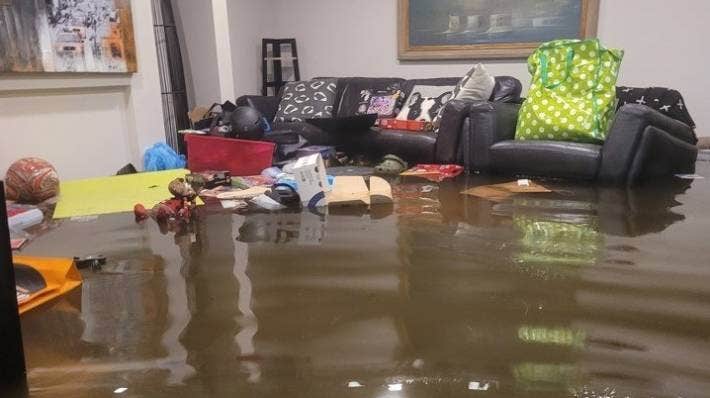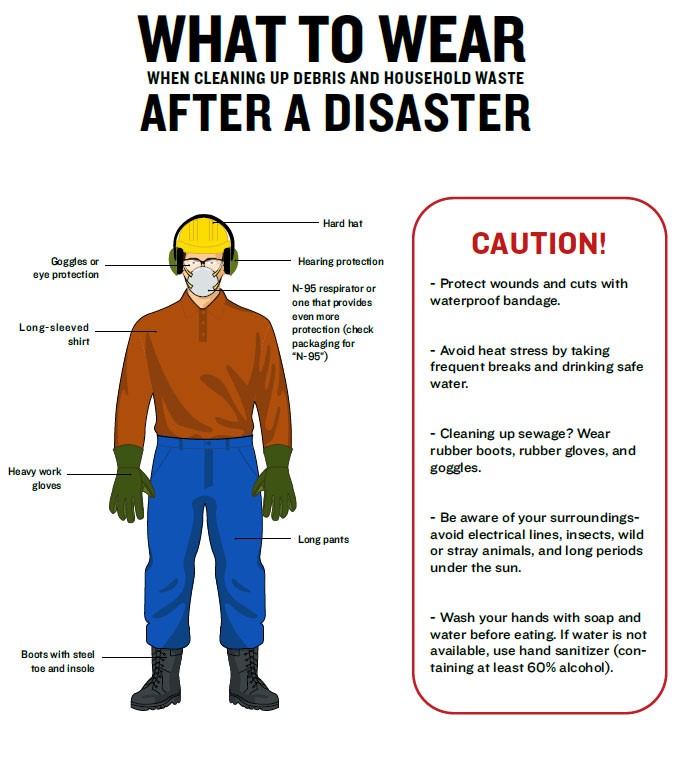Tackling the Aftermath: A Guide to Cleaning Up After a Flood in Your Home
When a natural disaster such as a flood strikes, the damage can be devastating and the road to recovery may seem daunting. Cleaning up after a flood is a crucial step in restoring your home and creating a safe living environment. This comprehensive guide will provide you with the necessary information and steps to effectively clean up after a flood. By following this guide, you can save time and ensure a thorough cleanup that minimizes further damage or health risks. Read on to learn how to navigate the cleanup process and restore your home after a flood.

Assessing the Damage and Making a Plan of Action
The first step in the recovery process is to assess the extent of the damage and create a plan of action. Start by surveying the affected area and documenting the damage. Identify any potential hazards or safety concerns that need immediate attention. Prioritize urgent needs such as addressing structural damage or ensuring the safety of your family. With a comprehensive plan in place, you can proceed with confidence, knowing that you are working towards rebuilding and restoring what has been lost.
Safety Precautions to Take When Cleaning Up After a Flood
Cleaning up after a flood requires taking appropriate safety precautions to protect yourself and your family. Prioritize your well-being by following these essential safety measures:
- Turn off the electricity: Ensure that the electricity supply to your home is switched off to avoid the risk of electrocution. If you are unsure how to do this safely, consult a professional electrician.
- Wear protective gear: Put on gloves, a face mask, and rubber boots to shield yourself from contaminated water, debris, and potential health hazards.
- Beware of structural damage: Be cautious when moving heavy objects and navigating the affected area. Structural damage may have occurred during the flood, and it's essential to prioritize your safety while cleaning up.
- Consider professional assistance: If the damage is extensive or if you are unsure about handling certain tasks, it's wise to seek professional help. Experienced restoration specialists can provide the expertise and equipment needed to help clear and restore your home effectively.

Identifying Mould and How to Get Rid of It
One of the common challenges after a flood is the growth of mould, which can pose health risks and further damage your home. Here's what you need to know:
- Identify mould: Look out for visible signs of mould growth, such as black, green, grey, or white spotty marks on walls, floors, or ceilings. Musty odours and an increase in respiratory issues may also indicate mould presence.
- Remove the source of moisture: To eliminate mould, address the source of moisture or humidity. Repair any leaks, improve ventilation, and use dehumidifiers to reduce moisture levels in your home.
- Clean and sanitize: Use a mixture of bleach and water to clean the affected areas. Wear protective gear and ensure proper ventilation while working with bleach. If the mould growth is extensive, consider consulting a professional mould remediation service.
Steps for Cleaning and Sanitizing Your Home After a Flood
To restore your home after a flood, thorough cleaning and sanitization are essential. Follow these steps:
- Ensure your safety: Equip yourself with appropriate protective gear, including gloves, protective clothing, and a respirator mask.
- Remove damaged materials: Clear out damaged and saturated materials, such as carpets, drywall, and insulation. Dispose of them properly.
- Sanitize surfaces: Use a powerful disinfectant to sanitize all surfaces, including walls, floors, and furniture. Follow the instructions on the disinfectant product for effective cleaning.
- Dry your home: Ensure proper ventilation and use fans and dehumidifiers to dry out the affected areas. This helps prevent mould growth and further damage.
By following these steps, you can effectively clean and sanitize your home after a flood, creating a safe and healthy living environment for you and your family.
Final Thoughts
Cleaning up after a flood can feel overwhelming, but with a well-executed plan and proper guidance, you can minimize the damage and restore your home. Assess the damage, prioritize safety, and take necessary precautions while cleaning up. Be vigilant about mould growth and address it promptly. Finally, follow the steps for cleaning and sanitizing to ensure a thorough restoration. Remember, the process takes time, but by following these guidelines, you can rebuild and return to a safe and comfortable home environment.
FAQ's
How do you clean a house after a flood?
Cleaning a house after a flood involves several steps. First, remove any standing water using pumps or wet/dry vacuums. Next, remove damaged items and debris. Clean and sanitize surfaces using a disinfectant to prevent mold growth. Dry the house thoroughly by using fans, dehumidifiers, and opening windows. Finally, conduct a thorough inspection to identify any hidden damage or areas that require further attention.
How do you disinfect a floor after a flood?
To disinfect a floor after a flood, start by removing any remaining water and debris. Clean the floor using a mixture of warm water and a disinfectant cleaner. Scrub the surface with a brush or mop, paying attention to corners and crevices. Rinse the floor with clean water to remove any residue. Ensure proper ventilation and allow the floor to air dry completely. For porous surfaces, such as carpeting, professional cleaning or replacement may be necessary.
What do you clean walls with after a flood?
After a flood, walls should be thoroughly cleaned and sanitized. Begin by removing any visible dirt or debris using a broom or vacuum cleaner. Clean the walls with a mixture of warm water and mild detergent. Use a sponge or cloth to gently scrub the surfaces. For stubborn stains or mold growth, a solution of bleach and water can be used, following appropriate safety precautions. Rinse the walls with clean water and allow them to air dry.
How do you get moisture out of a room after a flood?
Removing excess moisture from a room after a flood is crucial to prevent mold growth and further damage. Here are some steps to help with moisture removal:
- Open windows and doors to improve air circulation.
- Use fans and dehumidifiers to enhance drying. Position them strategically to target damp areas.
- Absorb moisture using desiccants like silica gel packets or moisture-absorbing products.
- Utilize natural ventilation by placing fans facing outward to expel moist air.
- Remove wet materials and furnishings that cannot be salvaged to expedite drying.
- Monitor moisture levels with a moisture meter or hygrometer and ensure they drop to acceptable levels.
